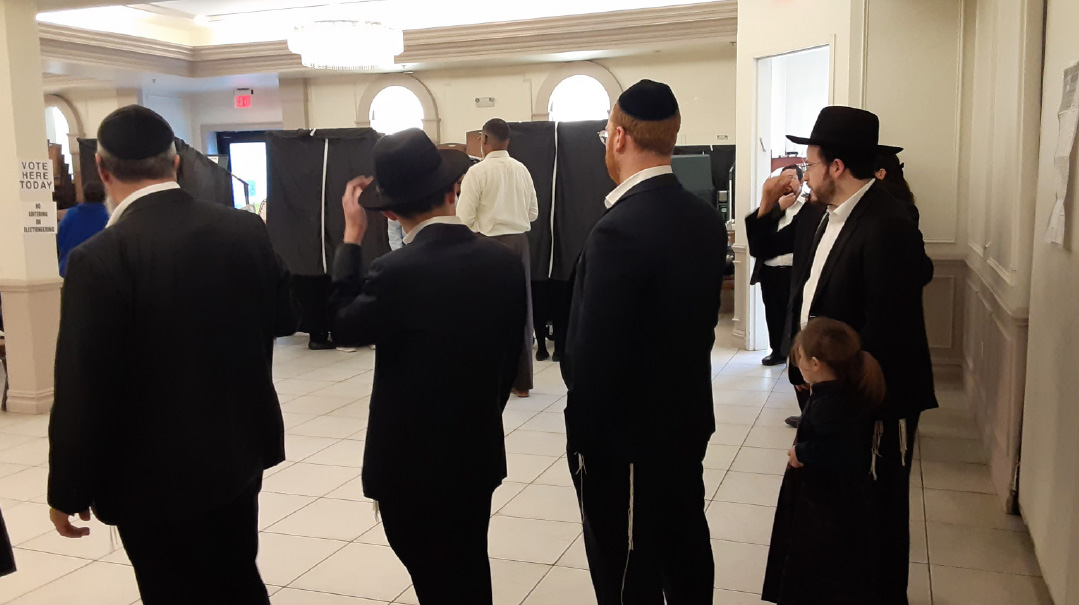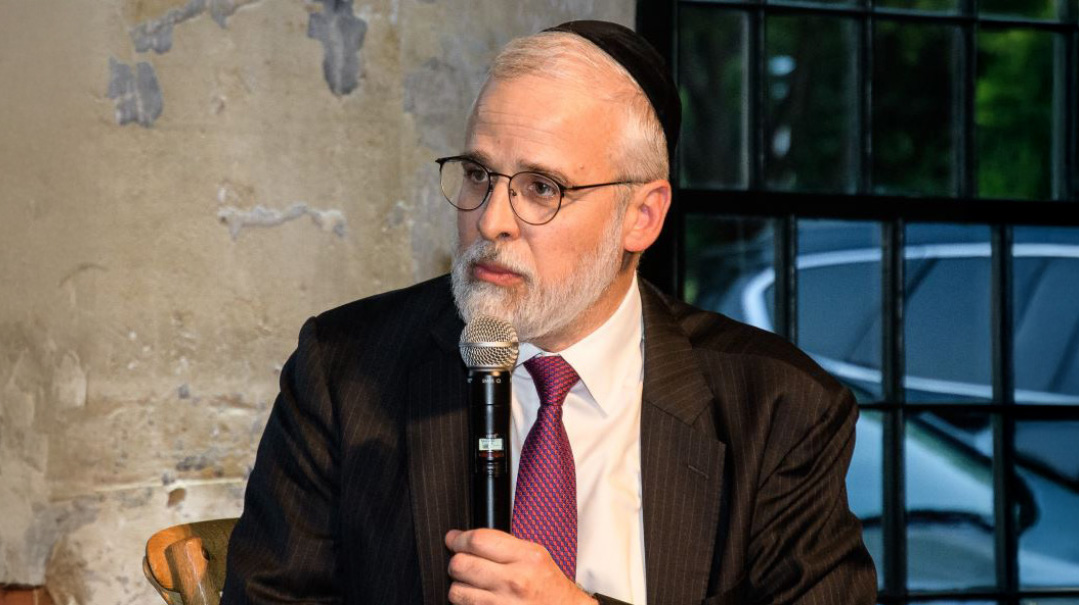Our Last Chance

The power of a kabbalah to commit to be better in some way is inestimable

This time of year reminds me of a sh’eilah I received that so inspired me that I often try to reflect on it before Ne’ilah. A woman had been undergoing advanced fertility interventions for years and had reached a round of treatment that was likely to be her final attempt. She was on the verge of success but had entered a very delicate phase of her treatment. Due to her precarious condition, her doctor felt it was imperative that she remain fully hydrated on Yom Kippur and not limit her drinking to small shiurim.
Her husband called to ask the sh’eilah, and I could hear her desperation in the background on the other end of line: “But it’s my last chance! Tell him it’s my last chance!”
My heart was breaking for the unimaginable emotional burden this bas Yisrael was bearing. She so much wanted to do the right thing, and at the same time she was grasping at every straw to keep her most cherished dream from dying. This is not the forum for a halachic discussion of my response, but I am happy to share that she merited cuddling her newborn baby before the next Yom Kippur rolled around.
Those words of desperation, “This is my last chance,” rang in my ears throughout all of Ne’ilah that year, and in almost every year since then. As the proverbial Gates of Heaven are closing, we beseech Hashem in desperation with “shaarei Shamayim p’sach.” This really is our last chance. So how are we to make use of it?
No doubt, our first reaction in a life-and-death situation would be to find the best advocates to come to our defense, or the best expert to treat our illness. In the world of ruchniyus, we look to the malach echad, whom we invoked when we recited kapparos on Erev Yom Kippur, to be a meilitz yosher. This malach is really a product of our own mitzvah performance and becomes an even stronger advocate when we renew our commitment to yet higher levels of fulfilling the ratzon Hashem. The power of a kabbalah to commit to be better in some way is inestimable, as long as that kabbalah is sincere and within our reach to live up to.
Rav Shalom Schwadron once told the story of his discussion with his rebbi, Rav Leib Chasman, of the strategy he had come up with to emerge meritorious in judgment on Yom Kippur. He told Rav Chasman that he planned to take on a particular resolution going forward. Rav Chasman asked him if he was certain that he could sustain it, and Rav Shalom affirmed his belief that he could. The rebbi asked the talmid once again if he thought it was sustainable, and Rav Shalom repeated his declaration.
“Good, now cut it in half,” was the master rebbi’s response.
As optimistic as we are when we make our kabbalos, we need to be sure they are reasonable to maintain, and they will then hopefully be meilitz yosher for us.
Indeed, Rabbeinu Yonah, in his classic Shaarei Teshuvah — the Shulchan Aruch of teshuvah, as the previous generation’s great ones would refer to it — tells us that by making a sincere kabbalah, a person receives instant credit for everything he ultimately does as a result of that genuine resolution. This is the most obvious reason why kabbalos are so effective and our greatest hope for gaining added merits to be zocheh b’din.
A kabbalah isn’t merely an investment in the future. Rather, it is a vehicle to instantaneously log thousands of zechuyos. Our resolve to invigorate our Bircas Hamazon with kavanah or to undertake extra blatt Gemara gives us hundreds of new mitzvos — right here, right now. They become the malachim hameilitzim we mentioned during kapparos. They are our most powerful advocates and the best protektzia we could hope to find at this crucial moment, our last chance.
WE would do well to study a powerful and encouraging insight from the Ramchal, Rav Moshe Chaim Luzzatto, the author of Mesillas Yesharim and many other classic works of machshavah.
We insert the words zachreinu l’chayim near the beginning of our Shemoneh Esreh tefillah for all of Aseres Yemei Teshuvah. We make a similar request toward the end of Shemoneh Esreh; but for this one, we ask not just for chayim but for chayim tovim. Why the difference? Would it not be appropriate to ask for chayim tovim in the opening of the tefillah as well?
The Ramchal, as quoted by Rav Chaim Friedlander in Rinas Chaim (explanations of the Yamim Noraim tefillos in the back of his classic Sifsei Chaim, volume one), tells us the following. Our opening request to be written for chayim is not a reference to life at all, in the literal sense. The Gemara tells us that tzaddikim, even after their death, are called chayim, alive. Our request at this juncture of the davening is to be identified and classified as tzaddikim in Hashem’s eyes, thereby meriting all the privileges a tzaddik deserves.
It is not a request for life per se; that is reserved for u’chsov l’chayim tovim that we recite further on. Zachreinu l’chayim is a plea to simply be viewed as a tzaddik. We obviously need to explain what that means. If we truly are tzaddikim, we don’t have to remind Hashem of that! And if we are not, what value is there in making such a request?
We can’t answer this question without understanding what “tzaddik” means in the first place. The importance of this word’s true meaning is highlighted by Kol Nidrei opening with the words Ohr zarua latzaddik, as well as the refrain of Uv’chein tzaddikim in the Yamim Noraim Shemoneh Esreh. Who are we talking about? The few great ones among us? Those whose ways we can only dream of following? What about us? Aren’t we average people also in attendance on Yom Kippur night and at all the tefillos of the season? Couldn’t we have chosen a pasuk that speaks to the vast majority instead of the elite minority?
Perhaps the explanation is as follows. A well-known Gemara tells us that tzaddikim are signed and sealed on Rosh Hashanah for life, whereas beinonim — literally, those whose merits and demerits are 50–50 — are left hanging until Yom Kippur. If they are meritorious (zachu, in the Gemara’s terminology), they, too, will be signed and sealed for life. The well-known Rambam, when quoting this Gemara, changes the word zachah to “asah teshuvah” — specifically, that he repented. The question is, if a beinoni is at exactly 50–50, why wouldn’t one mitzvah do the trick to tilt the scale? Why, then, must he do teshuvah? Let that one mitzvah suffice!
Rav Itzel Peterberger famously answered that the transgression of not doing teshuvah, squandering a golden opportunity for achieving closeness with Hashem during the Aseres Yemei Teshuvah, would outweigh any mitzvah that a person could muster, thereby making teshuvah indispensable during this time.
Rav Yitzchok Hutner pointedly asks: How can anyone truly be classified as a beinoni in the first place? Is it really possible that a person’s zechuyos and aveiros total up at exactly 50–50? And even if they do, it can’t be for more than a fleeting moment at best — certainly not for the entire week-plus of Aseres Yemei Teshuvah! Our madreigah is so fickle and fleeting, subject to change at every moment. And are we to think that Aseres Yemei Teshuvah was intended for this one-in-a-million individual who truly is considered a beinoni, and even then, for only a snapshot in time?
To resolve these questions, Rav Hutner suggests a novel approach. (This idea can also be found in the seforim of Rav Aharon Kotler and Rav Nosson Wachtfogel, and is expounded upon more recently in Yerach L’mo’adim from Rav Yerucham Olshin.) The term “tzaddik” in this context, says Rav Hutner, is meant to represent a “middah b’nefesh” — or as the vernacular goes, an attitude. Someone who is looking to grow spiritually and is taking steps to do so is termed “tzaddik,” for our purposes here.
Of course, it’s not enough to be a tzaddik at heart; it must be accompanied by action. But even when the Rambam is describing the concept of “rov zechuyos,” it is not the mathematical equation of mitzvos versus aveiros that carries the day; rather it is the direction in which a person is heading. He is a tzaddik due to his commitment to rov zechuyos.
And even when the Rambam recommends increasing our mitzvah activity to crawl out of beinoni status, or making kabbalos for that matter, it is mainly intended to change the way a person identifies himself to one of tzaddik. For a tzaddik, the arrow is always pointing up. A beinoni doesn’t have a strong pull one way or another. He may even have an abundance of mitzvos to his credit. But his mindset is what we would call centrist, or a middle-of-the road attitude. In Hashem’s world, it is a road to nowhere.
This novel interpretation of beinoni can perhaps be learned from the Gemara (Berachos 61b) that says, “a tzaddik is controlled by the yetzer tov, a rasha by the yetzer hara, and a beinoni by both.” The Gemara then quotes Rava (some texts have it as “Rabbah”), who labeled himself a beinoni. Apparently, in his humility, Rava felt his pull to the yetzer tov was not strong enough for him to consider himself a tzaddik.
Furthermore, this beinoni attitude can take a person down a very slippery slope. He is fine eating a food with a hashgachah he never heard of, or carrying in a community whose eiruv he has no idea is reliably maintained. He blows off the latest sh’eilos as chumras of the day, assuming that if it were a problem, he would have heard of it before, or previous generations would have been concerned about it as well. (Bugs in the water and in my vegetables, really?)
Recently, there was a story going around about a girls’ high school in Yerushalayim where the principal announced that there was a shatnez issue with a popular brand of shoes. All girls wearing this brand immediately removed their shoes.
This is a wonderful example of how one should conduct himself, but can we all confidently say we’re on that level?
Do we sometimes find ourselves rationalizing that these new sh’eilos are surely some type of extremism and not an integral part of being an erliche Yid?
In contrast, the attitude of a tzaddik, such as we are committing to be when declaring zachreinu l’chayim, is to be a ben aliyah and to want a closer relationship with Hashem.
We should ask ourselves, if I hear of a concern in an area of halachah that I’m not familiar with, do I want to find out more? Do I look at carrying in a problematic eiruv as being akin to walking on a land mine? Do we consider spiritual perils to be as hazardous as physical ones? Would I eat food rumored to be tainted with poison, or do I shrug it off and say the FDA approved it, so there is nothing to worry about? Would we wear clothing suspected of containing skin-eating bacteria? We should want to make sure our avodah is on the up-and-up, as cutting edge as our business and lifestyle.
If one enters Aseres Yemei Teshuvah as a beinoni, his only recourse is to do teshuvah and tip the needle toward tzaddik status, for only tzaddikim will merit a good din. One more mitzvah simply won’t cut it, but a new attitude and fresh approach might.
Juxtaposing ruchniyusdige issues with situations in our daily lives in which we wouldn’t be satisfied with the bare minimum can highlight this distinction for us. I recall the time when our shul needed a new sefer Torah, and a meeting was held to drum up support for the worthy cause. One of the attendees asked how much a used one would cost.
A very passionate member responded, “Would you dare drive a used car?”
Similarly, our relationship with Hashem has to be one where we strive to be our best. And we are being given the chance of renewing that relationship now. We can all be that tzaddik. And we can dare introduce the holy night of Yom Kippur with that statement of commitment, Ohr zarua latzaddik. It can potentially be us all. During Aseres Yemei Teshuvah, the lackadaisical attitude of a beinoni is treif, and we must examine ourselves to ensure that we are not guilty of that. We even give ourselves a push by observing things such as pas Yisrael that don’t necessarily concern us all year long. We want to live the part, not just say it.
In reality, then, the beinoni is not one-in-a-million. Sadly, he might be the millions. But it is time to up our game and stretch beyond beinoni. It is the attitude and newfound identity of a tzaddik that will win the day, and it is something we dare commit to three times daily in our Shemoneh Esreh during this precious time of year when we say Zachreinu l’chayim and Uv’chein tzaddikim.
The words of the Ramchal are incredibly empowering as we approach Hashem with a genuine commitment to live a better life, an elevated life, a holier life. Zachreinu l’ chayim — look at me as a tzaddik, because I am committed to being one right now. And as the Shemoneh Esreh concludes, we then additionally beseech Hashem for chayim tovim, the good life for which we pine in the merit of that commitment.
It is said that someone approached the Chofetz Chaim in desperation, assuming that the proper avodas hateshuvah was out of reach. The great tzaddik lovingly told him it is not so hard — “a charata’le, a kabbalah’le,” and you’re good to go. The Chofetz Chaim was hardly minimizing the seriousness with which one must approach teshuvah. Rather, he was giving us the formula for how to get started and hopefully taste the sweetness of the opportunity to work our way up to deserve the honorary title of tzaddik and merit l’yishrei lev simchah, knowing that we are striving to be our best. We can’t view teshuvah as something out of reach for the common man and attainable only for the tzaddik. The tzaddik could be me. The tzaddik better be me.
As the Aseres Yemei Teshuvah fade quickly away, we need to take chizuk in knowing that we are being given one more chance to make that commitment. It doesn’t have to feel like our last hopeless and desperate chance; rather, it’s a hopeful first step toward many more chances to come, if only we utilize the opportunity properly. We are putting down our credit card, giving a down payment now and promising to follow through as the year progresses, and we can afford to commit to grow more, even in tiny increments.
May we all merit the words of v’chasmeinu b’sefer hachayim and vachasom l’chayim tovim together with all of Acheinu Kol Beis Yisrael in a shnas brachah v’ yeshuah.
(Originally featured in Mishpacha, Issue 1032)
Oops! We could not locate your form.







